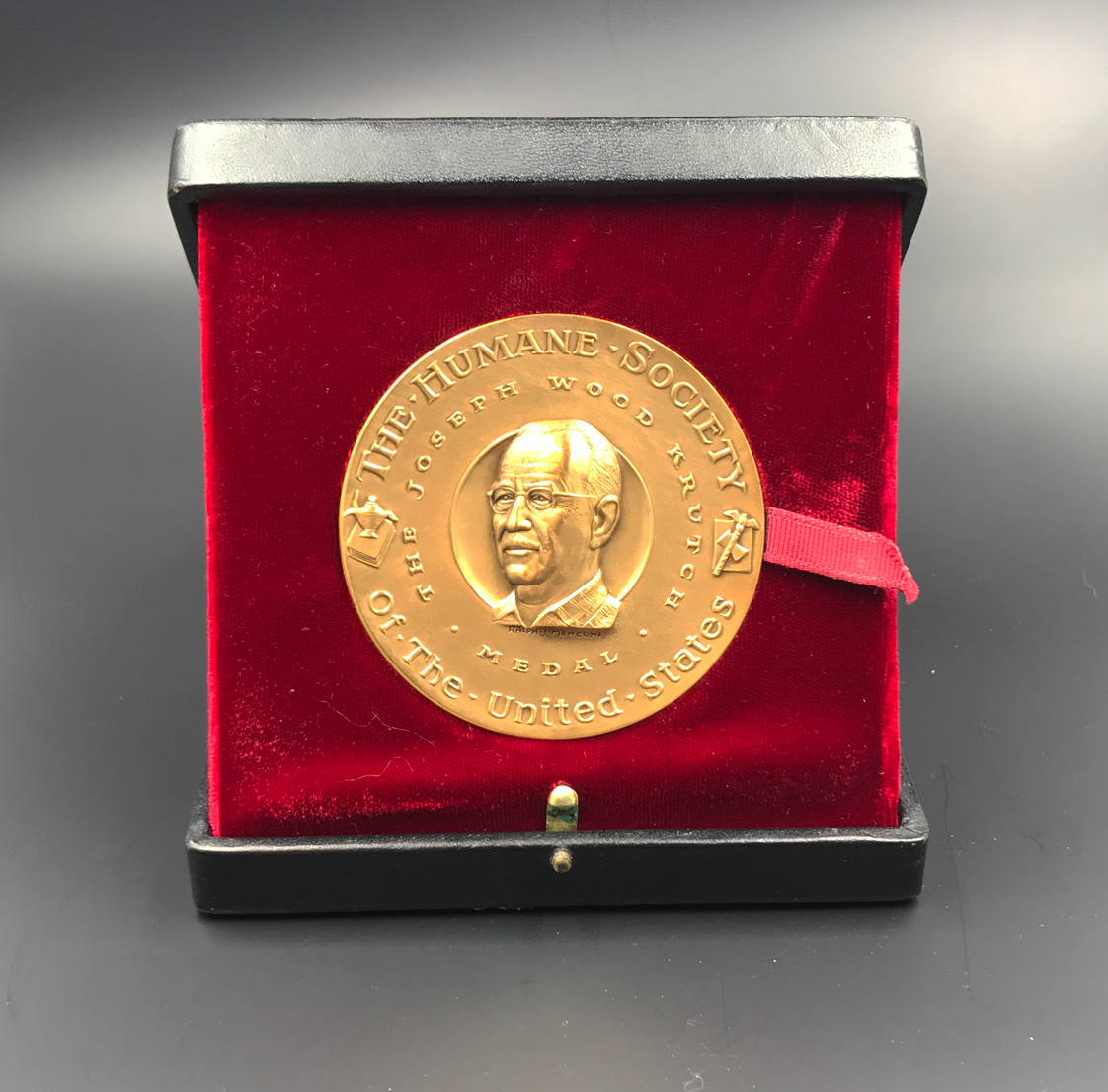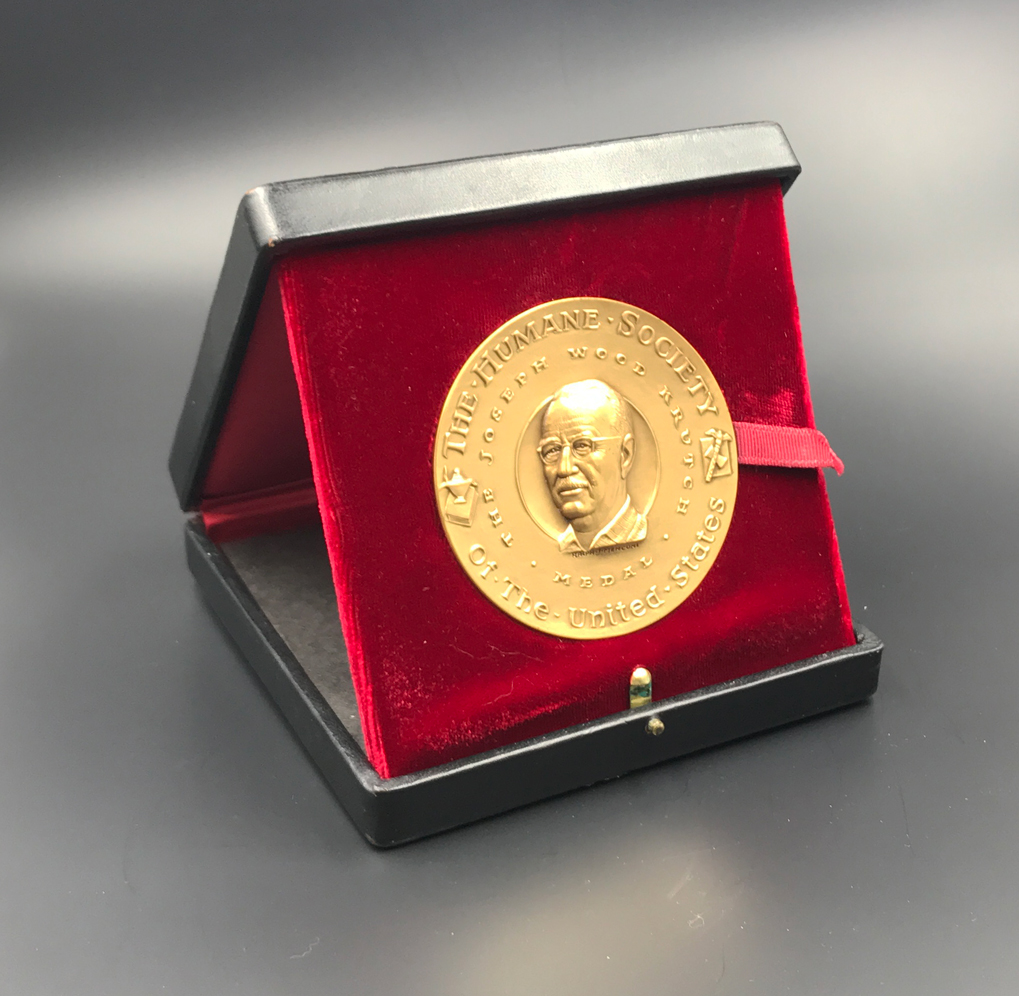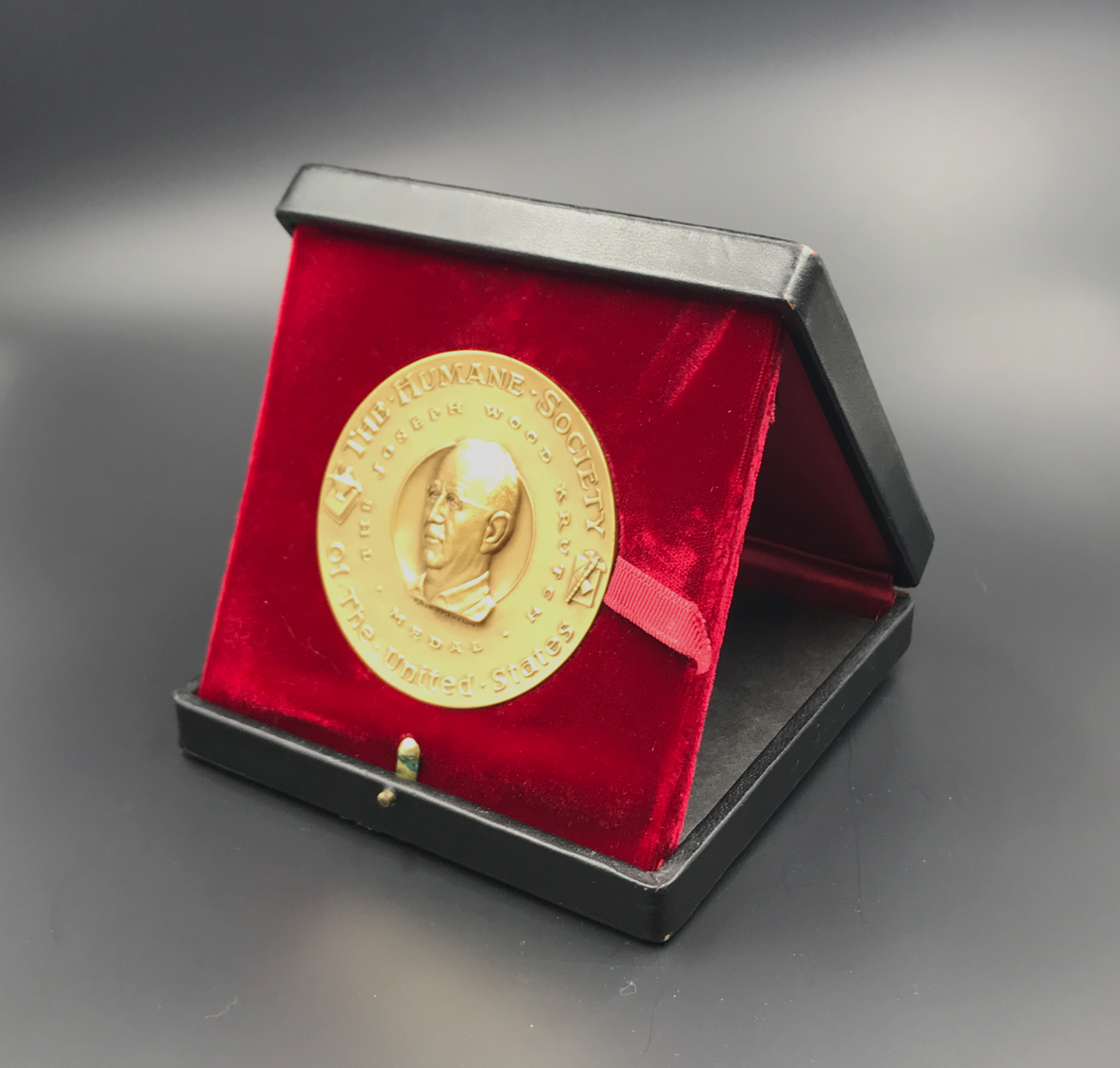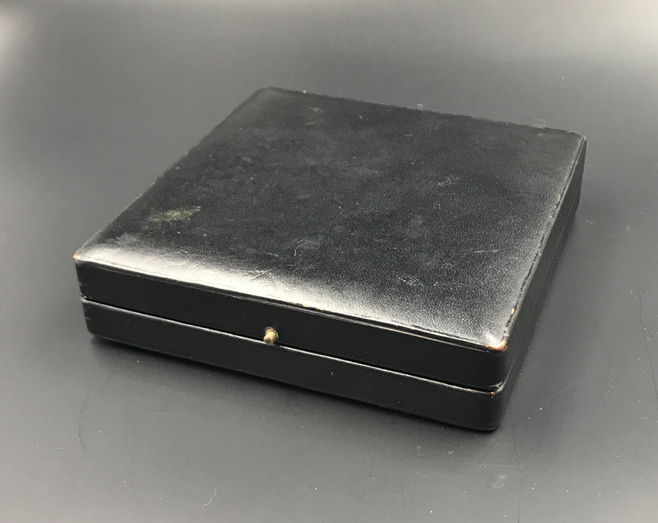Dian Fossey
Dian Fossey
Humane Society’s Joseph Wood Krutch Medal - 1984
This is a magnificent one-of-a-kind treasure: the prestigious Joseph Wood Krutch Medal awarded to world-renowned zoologist Dian Fossey by The Humane Society of the United States in 1984, in presentation case. With provenance from the estate of Dian Fossey.
The Humane Society of the United States awards the Joseph Wood Krutch Medal, its highest honor, to individuals who have made a significant contribution toward the improvement of life and the environment, or distinguished themselves through service to The HSUS.
A celebrated American educator, journalist and naturalist, Joseph Wood Krutch spent his last years defending nature and animals, and in 1968, he received The HSUS’s Humanitarian of the Year Award. In 1970, The HSUS renamed the award in Krutch’s honor, and in 1971 it commissioned the striking of the Joseph Wood Krutch Medal, designed by the renowned medal sculptor Ralph J. Menconi.
The Joseph Wood Krutch Medal is The HSUS’s highest honor. Krutch’s life epitomized the same commitment to celebrating animals and preventing cruelty that have motivated The HSUS since its founding in 1954. It is fitting that his dedication to animals and nature be remembered by an award that honors individuals who have devoted themselves to extending Krutch’s legacy.
Fossey’s book, Gorillas In The Mist, is one of the most important books ever written about our connection to the natural world. It’s the riveting account of her thirteen years in a remote African rain forest studying the greatest of the great apes. Fossey’s extraordinary efforts to ensure the future of the rain forest and its remaining mountain gorillas are captured in her own words in the book, which includes candid photographs of this fascinating endangered species. Although Fossey’s work ended tragically in her murder, Gorillas In The Mist remains an invaluable testament to one of the longest-running field studies of primates and reveals her undying passion for her subject, and remains the best-selling book about gorillas of all time.
Dian Fossey (1932-1985) was an American zoologist who undertook an extensive study of gorilla groups over a period of 18 years. She observed them daily for years in the mountain forests of Rwanda, initially encouraged to work there by famed paleontologist Louis Leakey, who also sent Jane Goodall to Tanzania to study chimpanzees, and Birute Galdikas to Borneo to study orangutans.
In 1967, she founded the Karisoke Research Center, a remote rainforest camp nestled in the Virunga Mountains in Ruhengeri province, Rwanda. When her photograph appeared on the cover of National Geographic Magazine in January 1970, Fossey became an international celebrity, bringing massive publicity to her cause of saving the mountain gorilla from extinction, as well as convincing the general public that gorillas are not as bad as they are sometimes depicted in movies and books. Photographs showing the gorilla “Peanuts” touching Fossey’s hand depicted the first recorded peaceful contact between a human being and a wild gorilla. Her extraordinary rapport with animals and her background as an occupational therapist brushed away the Hollywood “King Kong” myth of an aggressive, savage beast.
Fossey strongly supported “active conservation”—for example anti-poaching patrols and preservation of natural habitat—as opposed to “theoretical conservation,” which includes the promotion of tourism. She was also strongly opposed to zoos, as the capture of individual animals all too often involves the killing of their family members.
Fossey was brutally murdered in the bedroom of her cabin on December 26, 1985. Farley Mowat’s biography of Fossey, Woman in the Mists, suggests that it is unlikely that she was killed by poachers, as is commonly suspected. Mowat believes that she was killed by those who viewed her as an impediment to the touristic and financial exploitation of the gorillas. According to the book, which includes many of Fossey’s private letters, poachers would have been more likely to kill her in the forest, with little risk to themselves.
Today, the Karisoke Research Center is operated by the Dian Fossey Gorilla Fund International and continues the daily gorilla monitoring and protection that she started.




